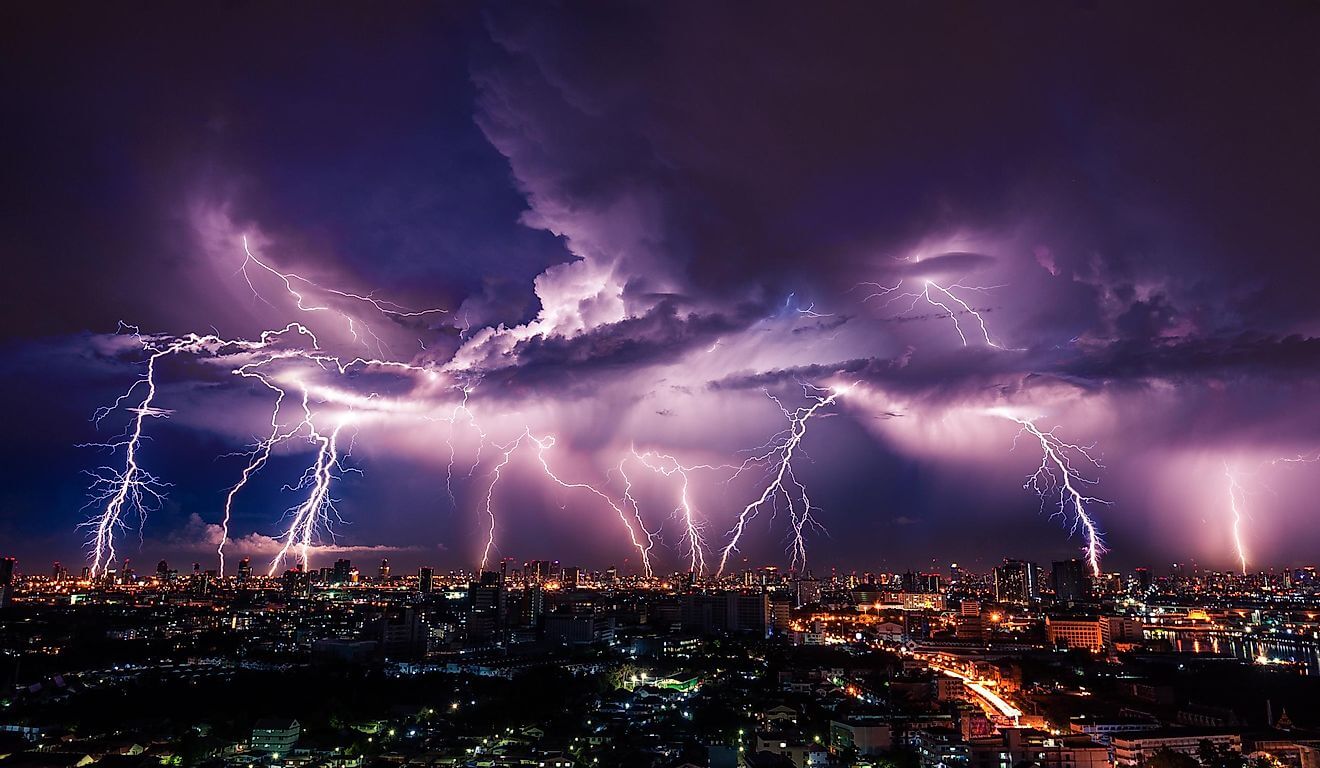
Need Help Now?
If you are in immediate need of help, please contact your local Earth Watch Corps Unit » or find an open shelter »
About Thunderstorms
A thunderstorm is considered severe if it produces hail at least 1 inch in diameter or has wind gusts of at least 58 miles per hour. Every thunderstorm produces lightning, which kills more people each year than tornadoes or hurricanes. Heavy rain from thunderstorms can cause flash flooding, and high winds can damage homes and blow down trees and utility poles, causing widespread power outages.

Responding Appropriately During a Thunderstorm
Prepare in Advance
- Assembling an emergency preparedness kit.
- Creating a household evacuation plan that includes your pets.
- Staying informed about your community’s risk and response plans.
- Ensuring each family member knows how to get back in touch if you are separated during an emergency.
- Download the Emergency App for iPhone >> or for Android >>
How to Prepare for Thunderstorms
- Learn about your local community’s emergency warning system for severe thunderstorms.
- Discuss thunderstorm safety and lightning safety with all members of your household.
- Pick a safe place in your home for household members to gather during a thunderstorm This should be away from windows, skylights and glass doors that could be broken by strong winds or hail
- Make a list of items to bring inside in the event of a severe thunderstorm
- Make trees and shrubbery more wind resistant by keeping them trimmed and removing damaged branches
- Protect your animals by ensuring that any outside buildings that house them are protected in the same way as your home
- Consult your local fire department if you are considering installing lightning rods
- Get trained in first aid and learn how to respond to emergencies

Recovering After a Thunderstorm
Take the Appropriate Steps to Stay Safe
- Never drive through a flooded roadway. You cannot predict how deep the water may be.
- Stay away from storm-damaged areas to keep from putting yourself at risk from the effects of severe thunderstorms.
- Continue to listen to a NOAA Weather Radio or to local radio and television stations for updated information or instructions, as access to roads or some parts of the community may be blocked.
- Help people who may require special assistance, such as infants, children and the elderly or disabled.
- Stay away from downed power lines and report them immediately.
- Watch your animals closely. Keep them under your direct control.
If Lightning Strikes
- Follow these steps if someone has been struck by lightning:
- Call for help. Anyone who has sustained a lightning strike requires professional medical care.
- Check the person for burns and other injuries. If the person has stopped breathing, call 9-1-1 and begin CPR. If the person is breathing normally, look for other possible injuries and care for them as necessary. People who have been struck by lightning do not retain an electrical charge and can be handled safely.
Explore Related Safety Topics
$ Explore Related Safety Topics
Help people affected by disasters big and small.
$
$10 is the minimum online donation.




